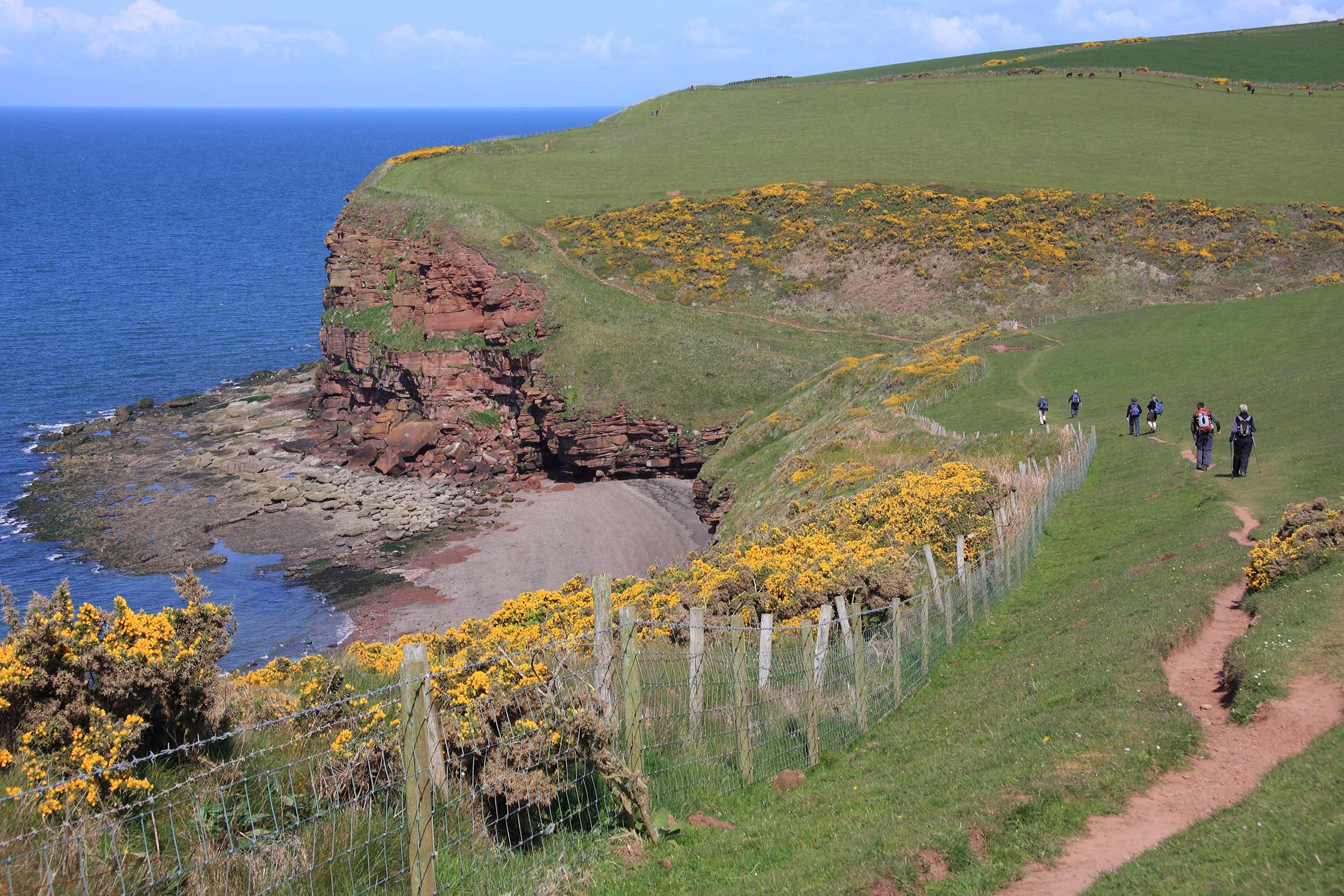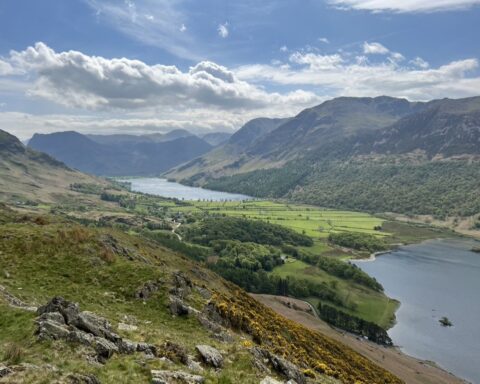Along a fairly flat coastline – fairly flat all the way from north Wales to southern Scotland, in fact – St Bees Head stands out in more ways than one. Cumbria’s most westerly point, this exposed headland reaches a high point of about 300ft at North Head. Its towering cliffs are composed of the local sandstone, a striking red-coloured rock that has been used in the construction of many building in the nearby village of St Bees.
In summer, the headland becomes a busy, noisy place as thousands of birds return to the cliffs to nest. Razorbills, fulmars, kittiwakes, herring gulls and cormorants are among the many species found here, but the stars of the show are the black guillemots which breed nowhere else in England. There are three RSPB viewing platforms, all easily accessed from the cliff-top path. The cliffs can also be seen from the little-visited shingle beach at Fleswick Bay, which can only be reached via a slippery scramble down the coast path.
The path over the gorse and grass-topped cliffs forms the first part of Alfred Wainwright’s long-distance Coast to Coast route. This starts at St Bees village and makes its way north over the windswept cliffs for nearly four miles before heading inland on its long journey across three National Parks to Robin Hood’s Bay 190 miles away. A less demanding walk starts in St Bees and heads north along the cliffs to Whitehaven, just seven miles away. As well as the RSPB reserve and Fleswick Bay, attractions along the way include the lighthouse at North Head and the industrial archaeology associated with this coast’s mining heritage.
The nearby seaside village of St Bees, on the Cumbria Coast railway line, is popular with holidaymakers. It has campsites, B&Bs and a handful of pubs and small hotels. Among its oldest buildings are the early twelfth-century St Bees Priory Church and the Elizabethan part of St Bees School.





